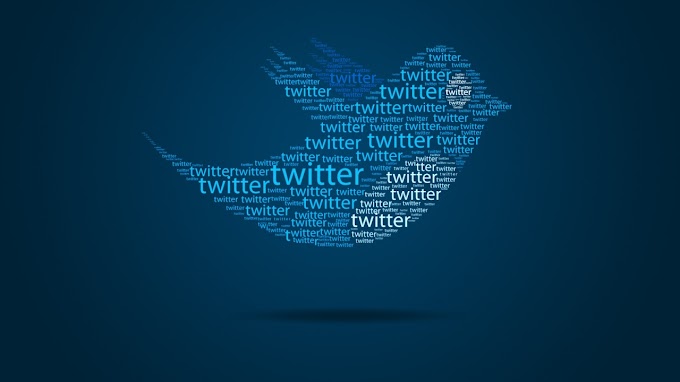What you tweet is obviously important—but so is when you tweet it. An analysis from Hootsuite found the overall best time to tweet is between 3 PM and 5 PM on weekdays—so if you can send your tweets within that time frame, you’re far more likely to see results than if you sent between 3 AM and 5 AM.
If you’re a B2C business, you also want to consider how and when your customers can check their X (Twitter) accounts (which, for many people, isn’t while they’re at work)—so tweeting before or after normal work hours can also be a great time to engage with your followers.
Scheduling your tweets ahead of time using a platform like Hootsuite not only ensures you’re sending the tweets you want at the times you want to send them, it also frees up more of your time during the day to respond to your customers in real time.
40% of Twitter users have made a purchase based on an influencer tweet, and 49% of users say they rely on recommendations from influencers. That’s not an insignificant number—so, depending on your brand and the audience you’re trying to target, influencer marketing might be a worthwhile strategy to try.
And the best part? You don’t need an influencer with millions of followers in order to make an impact. Micro-influencers—X (Twitter) users with smaller but engaged followers—can be just as (if not more) effective than the Kylie Jenners of the world.
Do a quick #hashtag search, or use tools like Hashtagify, to find the active voices in your industry—and then engage those influencers to get them on board with your brand. In many cases, a single tweet from a relevant influencer can do more for your brand than an entire ad campaign!
X (Twitter) marketing can be an incredibly effective way to connect with your customers, increase brand recognition, and drive engagement and sales. And now that you know exactly how to market your business with engaging and strategic posts and graphics on X (Twitter), all that’s left to do is get out there and get tweeting!
Twitter is an online social media platform. It is a micro-blogging tool designed to allow registered users to read, write and share up to 140-characters long messages which are known as tweets. Twitter is created by Jack Dorsey in 2006. Since its inception, it is continuously growing in popularity due to its unique features and usefulness. Today, it has a huge user base and is one of the leading social networking sites in the world.
Twitter marketing refers to the use of Twitter for promoting or advertising the business by companies or users by reaching out to new customers. It also allows you to market your blog, drive traffic to your website and create an identity for your brand. Twitter has a lot of unique features and options that can be used for promoting a business, service, product, etc. Some of the features are as follows:
Images and Videos: Twitter allows you to add images and videos to your tweets. By adding images or videos, you can drive engagement by more than 300%. It also allows you to tag as many as 10 users to increase the exposure of your Tweets.
Advanced Search: This feature allows you to get ahead of your competitors. In this feature, through search terms, you can find recent tweets of your locality, keep up with the current events, and find out how people feel about you and your competitors, etc.
Tweet Alert: It allows you to customize your Twitter account so that you get notifications when a tweet is posted. For example, if you want someone to get interested in your brand, you need to know about his interests and for that, you can set up a tweet alert on his account.
With over 330 million monthly active users, it could be a traffic goldmine for your organization. However, there are also 500 million tweets sent out every day, so how can you get your tweets seen? Should you still invest in it?
Just like LinkedIn and Facebook Groups, there are lots of different ways you can use it for your business, but at the same time, there are lots of companies struggling to make Twitter work as effectively as it used to be in the past.
Want to learn more about your customers? Bring a human touch to your brand? Build buzz about your new product? Provide super-fast customer support? Start cleaning up after a PR disaster? Hold a group chat and educate your customers?
No matter at which stage you are, this guide will help you either start from scratch or guide you to the next level of using Twitter to grow your business, traffic, and sales.
First, if you’re new to this whole social media marketing thing and you might have heard the name Twitter sometime before on the news but never really used it before, what is Twitter, and what makes it so unique?
At its origin, Twitter is a short message communication platform that allows you to send out messages (or Tweets) up to 280 characters (it used to be 140, but that officially changed in November 2017) to people who subscribe to you (the followers).
Your Tweet can include a link to any web content (think of your blog posts, website pages, etc.) or a photograph or video. Just like people can follow you, you can also follow others. This allows you to read, reply to and easily share their Tweets with your followers (retweet).
Twitter Business ModelHowever, next to this basic use Twitter has grown to so much more over the more than ten years of its existence. Twitter can be anything you want or make it to be. But before you can do that, you must create an account.
In an always-connected mobile-first world, of course, you don’t need to use your desktop computer to create a Twitter account (Twitter is even used for 80% using a mobile), but if you want some ease of use setting up your account, choosing the right pictures for your profile, etc. we still recommend using your computer.,
Your Twitter account and profile are the foundation of your Twitter experience for your followers. It’s your chance to tell your business story to the Twitter community and will most of the time be one of the first contact points when someone is figuring out if they want to follow you (or not).
As a result, It is important that your Twitter presence have the same look and feel as your other presence online. This helps people identify your business and builds trust. So, as part of your social media strategy, choose an account name and images consistent with your other online presence and your brand.
Let’s start by going to Twitter.com where you will be greeted with a blank page, where you can give your email address, come up with a password and leave your real name.
And to come up with a Twitter handle or username. On Twitter, your username, or handle, is your identity. If you can, sign up for Twitter by using your name or a variation of it as your username (assuming somebody else isn’t already using it).
That’s it your done; you just created your account. Twitter will now ask you for topics you’re interested in and will give you the opportunity to start already following suggested accounts or accounts of the people you already know by connecting your Gmail or Outlook email accounts.
We suggest you skip these for now. People will get a notification when you follow them, and it is better to show a full, interesting profile to them when they figure out who is following them instead of the empty profile your profile is still right now.
At a later stage, you can always still use the “Find people you know” button located on the right side of your profile page. This will give you the option to find people you already know using your address book from either Gmail or Outlook.
If you’re a really small business, we might suggest using your business name as the name for your account, but using a personal photo for the profile photo, adds a personal touch and might resonate better with your customers.
The second picture you need to upload is the Twitter header photo; this is a large background photo. The big-screen real estate gives you enough space to tell a story about your business maybe. Similar to the cover you have on your Facebook company page, this visual will appear at the top of your profile page.
If you go to your profile, you will be greeted with a beautiful empty profile. By clicking on the “edit profile” button, your profile transforms into an easy way to upload a new profile picture and header photo.
While you’re still editing your profile, don’t forget to add your location. Especially for a local business, this can help build a stronger connection with your potential audience. But remember, Twitter is a global phenomenon, if people from another city or country are visiting your profile, they might not recognize your specific neighborhood or community name.
Of course, you want people that visit your profile also end up as visitors to your site. By adding your website or link to your blog, you make it easy for people to find out more about your business.
Maybe put a link to a special landing page for people coming from your Twitter profile? This is a great way to welcome those visitors to your site and make them feel right at home.
Next, to your visual branding like your profile picture and your header photo, your bio might be one of the most critical items on your profile. It gives you the opportunity to tell the people viewing your profile precisely who you are and what you do.







.jpg)


0 Comments
We welcome relevant and respectful comments. Spam comments will not be approved.